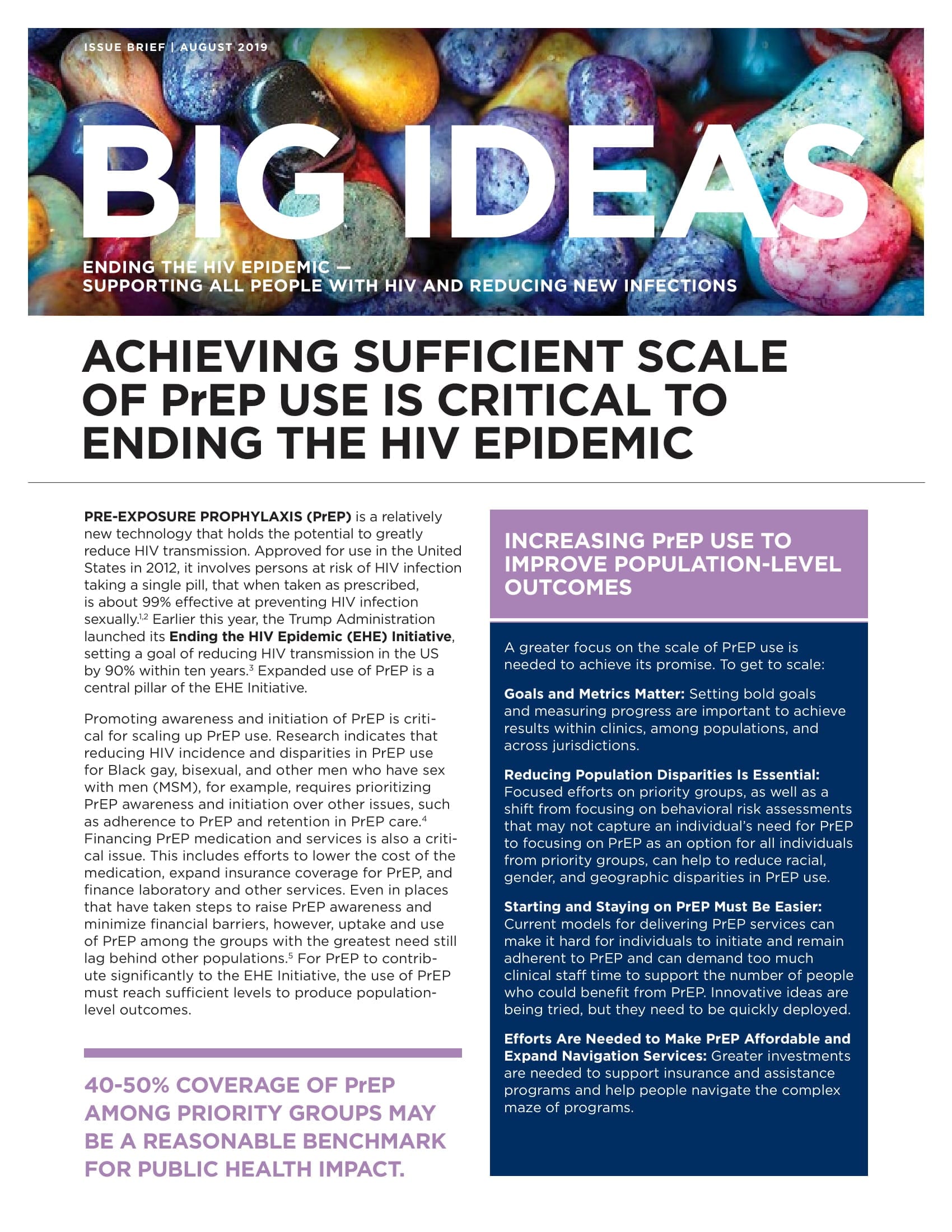 Last week, the Infectious Diseases Initiative at the O’Neill Institute for National and Global Health Law released three new publications. I previously discussed two of these publications in a blog post. This week, I will discuss the remaining publication, Big Ideas: Achieving Sufficient Scale of PrEP Use Is Critical to Ending the HIV Epidemic.
Last week, the Infectious Diseases Initiative at the O’Neill Institute for National and Global Health Law released three new publications. I previously discussed two of these publications in a blog post. This week, I will discuss the remaining publication, Big Ideas: Achieving Sufficient Scale of PrEP Use Is Critical to Ending the HIV Epidemic.
This brief explains how policy makers need to think differently about pre-exposure prophylaxis (PrEP) with a greater emphasis on achieving sufficient scale of PrEP use among priority groups, including Black and Latinx gay and bisexual men, transgender people, Black women and other women with an indication for PrEP, people who inject drugs, and people younger than 24 years old. In this brief, my co-author Jeffrey Crowley and I note that 40-50% coverage of PrEP among priority groups may be a reasonable benchmark for public health impact. In fact, a modeling study of men who have sex with men (MSM) with an indication for PREP found that if 40% of MSM were on PrEP and 62% of those on PrEP were highly adherent, it would avert one in three expected HIV transmissions over the next decade.
A greater focus on increasing the scale of PrEP use is needed to achieve population-level impact. The brief outlines four principles that can chart a path toward greater scale of PrEP use:
- Goals and Metrics Matter: Setting bold goals and measuring progress are important to achieve results in clinics, among populations, and across jurisdictions. We recommend that the United States Department of Health and Human Services (HHS) issue standardized metrics for measuring PrEP states and PrEP engagement at 12 months as two core metrics (where applicable) across HHS programs.
- Reducing Population Disparities Is Essential: Focused efforts on priority groups, as well as a shift from focusing on behavioral risk assessments that may not capture an individual’s need for PrEP to focusing on PrEP as an option for all individuals from priority groups, can help to reduce racial, gender, and geographic disparities in PrEP use.
- Starting and Staying on PrEP Must Be Easier: Innovative ideas are being tried, but they need to be quickly deployed. For example, New York City piloted immediate PrEP in their sexual health clinics and found that immediate starts with rapid HIV testing and medical screening before getting laboratory results back was safe and involved very few persons discontinuing PrEP for medical reasons. Other ideas that could be deployed include task shifting from physicians to nurses and pharmacists, using more community health workers in the provision of PrEP, and using technology to increase knowledge and awareness of PrEP, facilitate PrEP starts, promote adherence, and support health care providers.
- Efforts Are Needed to Make PrEP Affordable and Expand Navigation Services: Greater investments are needed to support insurance and assistance programs and help people navigate the complex maze of programs.
Expanded use of PrEP is rightfully a central pillar of the Ending the HIV Epidemic (EHE) Initiative in the United States. PrEP programs need to be able to effectively serve a larger volume of clients and need service models that make it easier for users and providers to maintain PrEP engagement. There is no time to waste.



